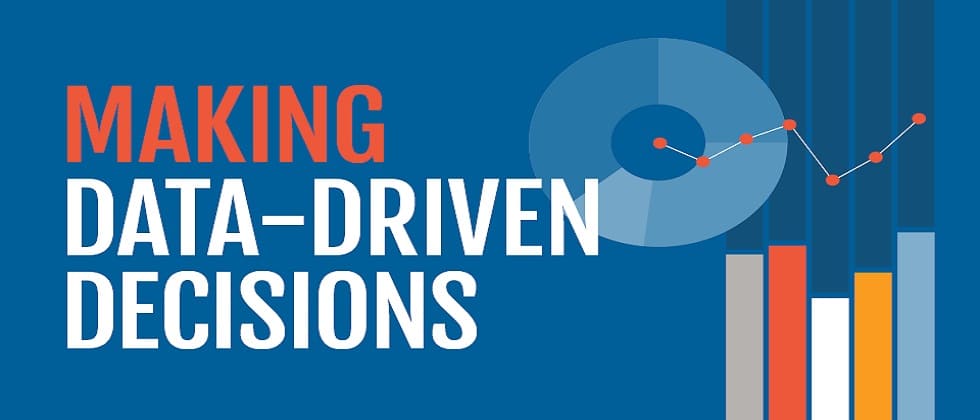Global supply chain uncertainties impact corporate risk management strategies. However, diversifying and broadening supplier relations can reduce disruptions, delays, tax complications, and labor law risks. As leaders, you have the power to identify optimization opportunities by utilizing available data on historical supply management trends and predictive insights. This post will discuss optimizing supply chain strategies through data-driven decision-making methods.
What is Supply Chain Optimization?
Supply chain optimization accelerates resource acquisition, enhances supplier relations, and ensures regulatory compliance for business reliance. Accordingly, data management professionals specializing in supply chain analytics will prioritize comparing available alternatives to current supplier relationships. It will document whether changing supply routes or adjusting material requirements can lead to more efficient and secure operations.
As supply chain optimization closely relates to timely delivery, production scheduling, and customer satisfaction, global enterprises heavily invest in relevant strategies and tools. However, stakeholders understand that poor data quality and obsolete IT infrastructure might hinder the implementation of superior technologies for process improvements.
If in-house talent requires skill development assistance, the organization can collaborate with established analysts or procure easy-to-use programs. Still, maximizing efficiency across supply and delivery demands advanced know-how concerning modern analytical systems.
The Importance of Data-Driven Decision-Making for Supply Chain Optimization
1| Scenario Analytics for Inventory Trends
Scenario analytics embraced predicting data consulting to simulate how inventory-related dynamics will shape business stability threats and strengths. If managers can foresee supply chain disruptions, they can prepare for them. They can learn vital insights into stock replenishment and servicing challenges.
Inventory analytics and simulations are significantly valuable to businesses in the manufacturing, fast-moving consumer goods (FMCG), and logistics industries. Besides, those insights help identify relevant changes in inventory planning. They originate from relevant data instead of intuition or purely empirical evidence.
2| Cost Reduction by Shortest Route Selection
In a traveling salesperson problem, you want to decrease distances and resources to reduce costs, accelerate delivery, and adopt dynamic problem-solving. Unsurprisingly, supply chain optimization through data-driven decisions relies on mathematical models to explore similar challenges.
Shortest route selection requires adequate intelligence concerning transportation systems, worker skills, fuel consumption, and risk-reward metrics. It also encompasses safety and legal compliance aspects in transboundary shipments. After all, time losses due to regulatory checks and documentation have financial implications involving customer service and satisfaction.
As a result, you want to focus on countries having trade agreements with your nation for tax and delivery optimization. Remember, the shortest routes must be safe for personnel and shipment objects. Do not risk losing your goods and raw materials by overemphasizing cost reduction or hiring less experienced distribution partners.
3| Performance Management Insights
Employee productivity determines how effectively an organization can accomplish a business objective. Similarly, streamlined factory production and on-time resource acquisition are two pillars of a robust concept-to-product workflow. Data analysts recognize the significance of accurate performance monitoring. They will empower your workers leading supply chain operations to identify productivity improvement areas.
Data-driven skill development and re-training programs help ensure continuous professional growth. At the same time, adapting to revolutionary tech advancements becomes more manageable. After all, employee insights and maintenance audits concerning factory output highlight legacy workflow components requiring upgrades.
For example, you want your supply partners and in-house executives to leverage the latest software ecosystems for digital invoicing, agreements, and delivery scheduling. While a few might need longer to adapt to online communication and collaboration systems, others can share their workload. However, an appropriate performance and accountability analytics strategy is vital to avoid burdening workers or distributing responsibilities without considering workers’ aptitudes.
4| Demand Shock Forecasting
A demand shock is hard to predict but potentially adverse to most industries. Consequently, global companies develop or procure technologies specializing in demand shock estimations. While positive demand shocks seem advantageous, the benefiting enterprise must have the infrastructure to satisfy the unexpected demand hikes. Otherwise, prices must increase to reflect the finite supply potential.
Nevertheless, a negative demand shock can cause an unfavorable abundance of goods, incentivizing brands to pause some production activities or promote deep discounts for stock clearance. Demand shocks are a nightmare for supply chain managers serving companies that deliver FMCGs and highly depreciating consumables.
Furniture, electronics, and automobiles will experience significant value reductions unless they become collectible symbols of an older era. Simultaneously, a dramatic rise in philosophical purchasing habits inspired by sustainability, child rights, or water preservation principles might force supply chain departments to replace conventional goods with greener alternatives.
These dynamics affect sales, inventories, factories, distribution channels, and brand messaging. As a result, leaders must acquire the talent and toolkit to predict demand shocks.
Tips for Optimizing Supply Chain with Data-Driven Decision-making
1| Encouraging Digitalization of Documentation
Scanning on-paper records for optical character recognition (OCR) is time-consuming. Instead, businesses must switch to 360-degree computer-aided reporting. Without qualitative data, you cannot manage, protect, and modify supply chain workflows. Additionally, it is easier to migrate, update, and trace electronic records.
2| Upholding High Data Quality Standards
Incomplete, outdated, and corrupt data hurts insight explorations, indicating a need for a comprehensive data quality management (DQM) strategy. Leaders must also discourage biased reporting and toxic workplace environments that might nudge workers into unethical data practices.
3| Unifying Data Across Disparate Sources
Breaking down departmental silos helps modernize business intelligence development. Remember, this era rewards those brands that excel at multidisciplinary brainstorming. How can you solve supply-related problems if data stays in multiple sources? Data unification helps improve the ease of access for all stakeholders by offering virtual consolidation and central dashboards.
4| Training Employees
Purchasing advanced tools is pointless if your team fails to use them without going over budget and spending too much time learning how to use them. So, it is crucial to ensure in-house professionals understand the purpose and interface of newer programs for supply chain optimization.
5| Real-Time Data Streaming
A data stream collects and prepares data on-site to make it accessible to the stakeholders as soon as possible. This approach exponentially boosts final time-to-insight (TTI), enhancing the relevance of animated dashboards depicting supply chain events. Data streaming empowers workers and supply partners to respond to delivery obstacles sooner.
Conclusion
Data-centric business development strategies embrace supply chain analytics and tools to mitigate risks, ensure timely delivery, and streamline operations. Manufacturing, FMCG, and logistics enterprises can witness better profit margins and supplier relations if they utilize data-driven decision-making for supply chain optimization. Managers can leverage the reported insights to list inventory trends, compare alternative routes, and monitor employee productivity. Moreover, forecasting demand shocks and calculating their impact on prices or capacity utilization becomes straightforward because of supply intelligence. These advantages justify the corporate investments into advanced research projects for all-inclusive supply chain management, helping scale businesses and expand market reach.





